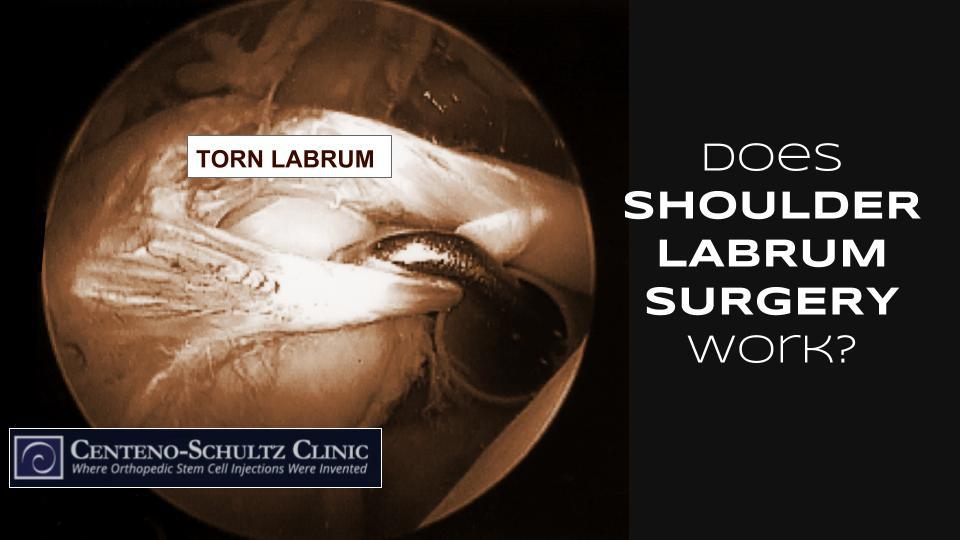Over the past decade, we’ve seen study after study conclude the lack of efficacy of many elective orthopedic surgeries, such as meniscus repairs, shoulder decompression, hip impingement surgery, and many more. Specifically, they show that the outcomes of these surgeries are no better than those following a fake surgery. Another one we can add to this list is shoulder labrum surgery.
Shoulder Labrum Anatomy and Pathology
The shoulder is structured as a ball-and-socket joint. The socket is a shallow indentation in the shoulder blade where the head (or ball) of the upper-arm bone (the humerus) inserts. The labrum is a fibrous tissue that lines the lip of the socket and helps protect the joint. Like the knee meniscus or hip labrum, the shoulder labrum can tear, and this tear can be seen on an MRI.
First, it’s important to understand that there are different types of shoulder labrum tears, which are typically labeled as type I, II, III, or IV. Today we’re focused on the common type-II SLAP lesion tear. The type II tear is a labrum that has partly pulled away from its attachment at the socket, creating a small gap between the labrum and the bone. A SLAP lesion is where an injury has occurred where the biceps tendon attaches to the labrum at the top of the socket.
What You Need to Know
If the patient also happens to have chronic shoulder pain in conjunction with a shoulder labrum tear shown on MRI, orthopedic surgeons like to go in and “repair” the labrum. The problem with this is that the pain isn’t necessarily related to the shoulder labrum tear. If not the labrum tear, then what could be causing the shoulder pain? Surgeons almost always miss hidden shoulder instability as a cause of pain as most of the time surgical decisions are based on what’s seen on MRI, which don’t show this instability. Dr. Centeno’s video below gives a demonstration of what hidden shoulder instability looks like compared to normal motion in a shoulder:
So if there is hidden shoulder instability that is causing shoulder pain and a surgeon “repairs” a labrum tear seen on MRI, not only is the patient now potentially facing side effects, such as retears, and long recovery times, but the patient is probably still in pain as his or her shoulder instability has still not been addressed.
When there is a SLAP tear, biceps tenodesis is another surgery for a labrum tear. The surgeon will detach the biceps muscle from the part of the labrum and reattach is it at the humerus. This is a more involved surgery, and, as a result, there are more side effects associated with this one due to the fact that the bomechanics of the biceps are being permanently altered as the link above explains.
So the big question here is does shoulder labrum repair work? Let’s review one study.
Fake Surgery Just as Effective as Shoulder Labrum Repair
The study consisted of participants with type-II SLAP labrum tears. Participants were randomized into one of the following groups: labrum repair, biceps tenodesis, or a placebo (fake) surgery. Researchers found no outcome differences regardless of the procedure received. In other words, those receiving either of the invasive shoulder labrum surgeries fared no better than those who received sham surgery.
TORN LABRUM
So with another study finding more bad news for elective orthopedic shoulder surgeries, is shoulder labrum surgery on its way out? Probably not yet, but rest assured, the research will eventually catch up to all of these ineffective surgeries, especially as nonsurgical interventional orthopedic solutions begin to define the future of orthopedic care.

